East Lancashire AGS Show, 2012
The benches were suitably congested as stewards eased the marker canes apart to squeeze in entries for the popular classes, which flooded in for this very well supported show. The sun shone too (no snow or torrential rain this year) to make the staging and collection of exhibits a pleasurable experience.
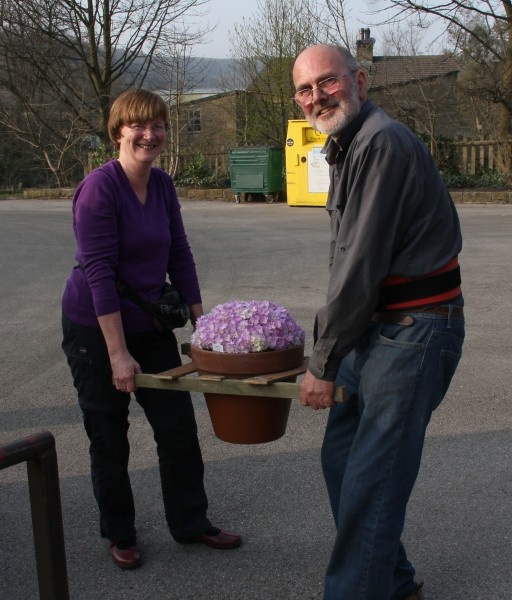
Frank and Barbara Hoyle were recipients of both AGS Medals for the first time, coming first in the large and the small Open six-pan classes. They had devised an ingenious carrier for transporting the heavy large pans to and from the show benches! Amongst their many fine plants was a floriferous, large pan of Cyclamen pseudibericum. This had been passed onto them by Mike and Christine Bown in 2009, the incumbent responsibility taken on with considerable apprehension! One look at the pan revealed they had mastered the art of growing it to the highest level and a Certificate of Merit was awarded. Immediate success was not achieved however, for the change in ownership meant that flowers were sparse in 2010. The following year, the plant was not repotted and after the remnants of leaf and flower were removed, the pot was placed under a greenhouse bench.
![]()
As the first new autumnal leaves appeared it was returned to a fairly dry plunge. Then, in January, when the plant was in good leaf and a few flowers had already appeared, it was given a brief plunge in water which contained a dose of liquid seaweed. It was then returned to a wet/moist sand plunge in full light. The alpine house (and plant) were shaded from late March onwards with curtains of white fleece, to avoid exposure to hot sun. This particular specimen is unusually vigorous and it has proved necessary to remove a number of leaves in order to allow room for the flowers to come through.
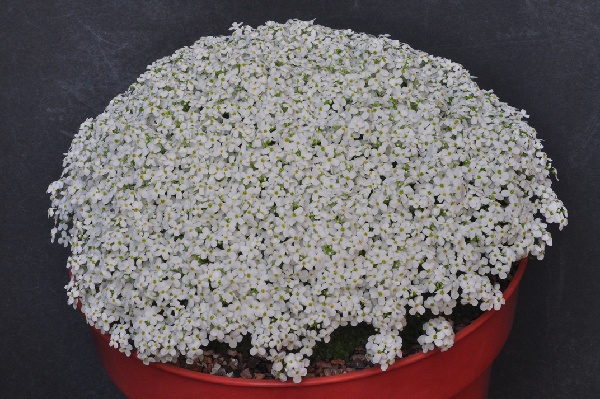
Plants are transported to flower shows using all manner of cunning methods, but this was surely the first time that an old-fashioned metal bread bin was utilised to ferry a Farrer Medal plant to a show. Weighing in at 32 kilos, a large pot containing a 16 year old Draba ossetica was hauled into a taxi, then onto a train, and so to a waiting car by Robert Rolfe, arriving at the show hall with scarcely a petal shed. This was its best flowering in a number of years: the winter before last hit it particularly hard, with all the stock suffering dieback (which is rapidly made good once the new growth flush starts in April) and many of the buds aborting.
Its fellow Caucasian and close relative D. longisiliqua, grown close by, takes harsh winter weather in its stride. A compost based on fine grit, silver sand, perlite, a small amount of peat, and just a pinch of loam is advisable, giving liquid feeds every few weeks during the summer, and keeping the plant well-ventilated throughout.
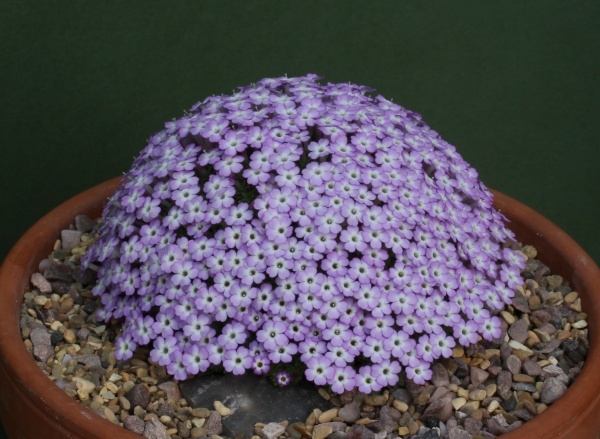
The best plant in the Intermediate Section was a thoroughly-deserving, floriferous dome of Dionysia bryoides grown by Tony Taziker. Purchased as a youngster from a local group plant stall in 2009, it had been potted on in Tony’s usual mix of 2 parts grit, 1 part John Innes No. 2 plus a little vermiculite and plunged in the alpine house benching. No direct water was applied, all moisture being derived from the deep sand plunge which had been kept quite damp. The harmful effects of Botrytis are minimised by immediate removal of unseasonal flowers. Tony could not explain how the ‘dome’ effect was achieved, but his growing regime certainly works.
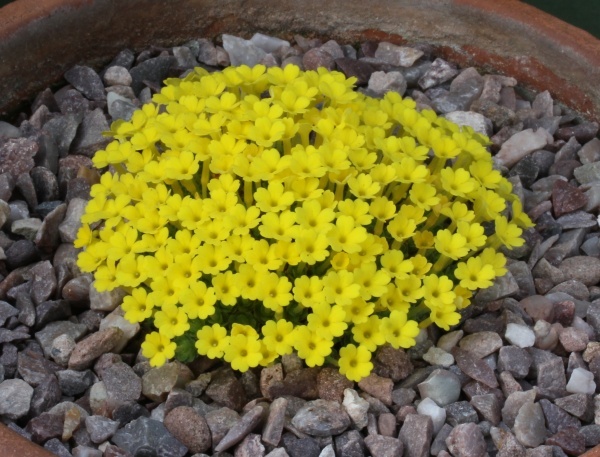
Another much admired Dionysia which also received a Certificate of Merit was Dionysia crista-gallii, grown by Geoff Rollinson. The plant had been raised from seed sent by Michael Kammerlander (GR/MK1072/R2) and sown on Christmas Day in 2009. Germination occurred two months later and this particular seedling was potted in April 2010 into a 6cm clay pot. Geoff’s compost was 1 part John Innes No. 3, 1 part leaf-mould and 2 parts 4-5mm grit. A few flowers appeared in spring 2011 and were immediately removed to allow energy to go into growth. The plant established well through 2011 and was repotted in the same compost in early March 2012.
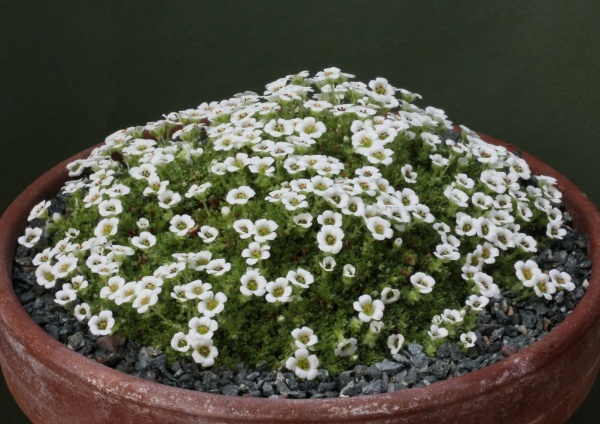
Saxifraga georgii can hardly be described as a regular visitor to the showbench nowadays but John Mullaney ensured we remain in touch with this Himalayan species (and parent of many popular hybrids). The original plant material was collected by George Smith, and passed on to Brian Burrow, who originally distributed young plants. Twelve years on, John generously circulated plants of the same clone at the show and whilst not ‘covered’ in flower, his exhibit was a significant feat of cultivation.
His plants are grown in a alpine house with shading from spring onwards. He described the compost as a mixture of 40% John Innes No. 2 plus 60% a silver sand/vermiculite/grit mix. Propagation is easy from rosettes at the edge of the cushion which are encouraged to root before removal by occasional exposure to heavy rain. At all other times, pot grown plants are kept covered but John also grows this species outside in a trough.
![]()
One would normally have expected the Grainger Trophy to be clinched by the recipients of both six-pan classes but Don Peace steadily picked up enough first prize points from a distinguished car boot full of plants to clinch the award. Three interesting fritillarias garnered red stickers. Fritillaria hermonis ‘Anti-Lebanon Form’ is derived from the Anti-Lebanon range that predominantly form the border between Lebanon and Syria. It grows taller than other clones of F. hermonis seen on the show bench, bulking up readily and producing ‘rice grain’ offsets: here is no need to resort to vegetative propagation.
![]()
Three bulbs of Fritillaria alfredae subsp. glaucoviridis were obtained from Kath Dryden in 1998 but there never split during the first four years of ownership, so Don started 'cracking' them in two each year during the autumn. This has proved very successful, with two 19cm potfuls are testimony to this.
![]()
Fritillaria aurea x pinardii was another acquisition from the same source, thought to represent the Rix 1603 clone. From 2005 onwards, increase of the original trio was achieved by separating the 'rice grains' from the flowering-size bulbs, which were also split into two during the early autumn. Don finds that the bulbs do not like to be kept too dry during their summer dormancy. All his bulbs are grown in a standard bulb mix of 2 parts John Innes No. 3 to 1 part grit.
Fritillaria hermonis is repotted each year, whereas the other two get a complete repot every other year, with just the top half of the compost replaced in the 'fallow' year.
Geographical variation is part of the appeal with some alpine plants and two distinctive forms of Androsace laevigata were in fine form for Chris Lilley. His plants originated from seed collected in the Columbia River gorge in one example [below left], the other from Saddle Mount [below right]. Mature plants are potted in a mix of 50% John Innes No. 2, 40% grit and 10% ‘home made’ compost. Careful management of moisture is the key to success and not always ‘care’ with the amount! Chris finds that in summer, water can beneficially be poured over the cushion. But during the winter months, absolutely no overhead moisture is given. Extra ventilation is achieved by removing glass from the side of the frame: shading from hot sun is important during high summer.
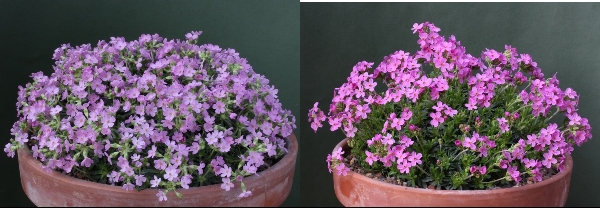
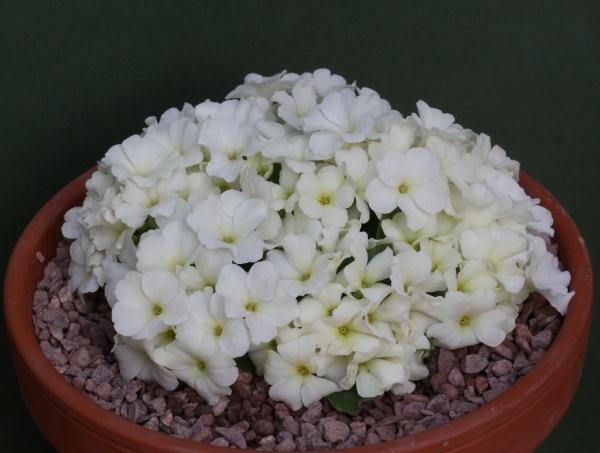
Colin and Kathleen Billington celebrated a good day in the Novice Section, clinching the Eileen Lever Memorial Trophy for the most first prize points, plus the Booker Trophy for the best plant in that section with Primula ‘Broadwell Milkmaid’.
